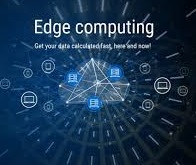What is Edge Computing in everyday life
What is Edge computing refers to the practice of processing data closer to the source of the data, rather than sending all data to a central location for processing. This can be done by using devices such as sensors, cameras, and gateways that are located at the “edge” of a network, closer to the source of the data. Edge computing can help reduce latency, increase security, and enable real-time decision-making in situations where sending data to a central location is not practical.
There are many potential uses for what is edge computing in everyday life. Some common examples include:
1. Internet of Things (IoT) devices:
Edge computing can be used to process and analyze data from IoT devices such as sensors, cameras, and smart appliances. This can be used for things like home automation, energy management, and monitoring.
2. Industrial automation:
Edge computing can be used to enable real-time monitoring and control of industrial equipment and processes, such as in manufacturing or oil and gas operations.
3. Transportation:
Edge computing can be used in vehicles, such as cars and drones, to enable real-time navigation, traffic monitoring, and collision avoidance.
4. Healthcare:
Edge computing can be used to process data from medical devices such as wearables, remote monitoring devices, and diagnostic equipment. This can be used to improve patient care and enable remote monitoring of patients.
5. Retail:
Edge computing can be used in retail stores to track inventory, monitor customer behavior, and improve the shopping experience.
These are just a few examples of how edge computing can be used in everyday life, as the technology is still evolving and new use cases will be discovered as the technology advances.
There are several ways in which what is edge computing technology is evolving and leading the way in its field:
Low-power edge devices:
The development of low-power edge devices such as gateways, sensors, and cameras is making it possible to process data closer to the source. This helps to reduce latency, increase security, and enable real-time decision-making.
5G technology:
The roll-out of 5G networks is increasing the capacity and speed of wireless networks, making it possible to transmit large amounts of data from edge devices to central locations for processing.
Artificial intelligence and machine learning:
Edge computing devices are increasingly being equipped with artificial intelligence (AI) and machine learning (ML) capabilities. This allows for more sophisticated data processing and analysis at the edge.
Containerization and edge orchestration:
Edge computing is also being enable through containerization, which allows for easy deployment of applications and services at the edge, and edge orchestration which enables remote management and monitoring of edge devices and services.
Standardization:
Standardization efforts such as the Open Edge Computing Interface (OECI) and OpenFog Consortium are helping to promote interoperability and scalability of edge computing systems.
These are some of the ways edge computing technology is evolving and leading the way in its field, as the field is rapidly advancing and new developments are arising.
Edge computing has the potential to play a role in reducing carbon emissions by enabling more efficient use of resources and reducing the need for energy-intensive data centers.
Reducing energy consumption:
By processing data closer to the source, edge computing can reduce the need to transmit large amounts of data over long distances to centralized data centers. This can help to reduce energy consumption and lower carbon emissions.
Smart Grid integration:
Edge computing can be used to enable real-time monitoring and control of energy consumption and generation in smart grid systems. This can help to optimize energy usage and reduce carbon emissions by reducing the need for fossil-fuel power generation.
Intelligent transportation:
Edge computing can be used to enable real-time monitoring and control of transportation systems, such as cars and drones. This can help to reduce energy consumption and lower carbon emissions by improving traffic flow and reducing the need for human-driven vehicles.
Industrial Automation:
Edge computing can be used to enable real-time monitoring and control of industrial equipment and processes. This can help to optimize energy usage and reduce carbon emissions by reducing the need for human-driven processes.
Green Energy:
Edge computing can be used to enable real-time monitoring and control of renewable energy sources such as solar and wind. This can help to optimize energy usage and reduce carbon emissions by reducing the need for fossil-fuel power generation.
It is important to note that, while edge computing can play a role in reducing carbon emissions, it is not a standalone solution and should be considered as a part of a comprehensive strategy to address climate change.
Individuals can participate in what is edge computing in a few different ways:
Using edge computing-enabled devices:
Individuals can purchase and use devices that are enabled with edge computing capabilities, such as smart home devices, wearables, and connected cars.
Developing edge computing applications:
Developers can create and distribute applications that run on edge computing devices, such as IoT gateways, cameras and sensors.
Participating in edge computing research:
Individuals can participate in research projects related to edge computing, either by contributing to open-source projects or by participating in research studies.
Investing in companies that are developing edge computing technologies:
Individuals can invest in companies that are developing edge computing technologies, such as those producing edge devices, network infrastructure and software.
Supporting edge computing standardization:
Individuals can support standardization efforts that aim to promote interoperability and scalability of edge computing systems, such as the Open Edge Computing Interface (OECI) and OpenFog Consortium.
It’s important to note that, as edge computing is a relatively new field, the opportunities for individuals to participate may be limited at the moment, but as the field advances, more opportunities will arise and it will become more accessible for individuals to participate.
